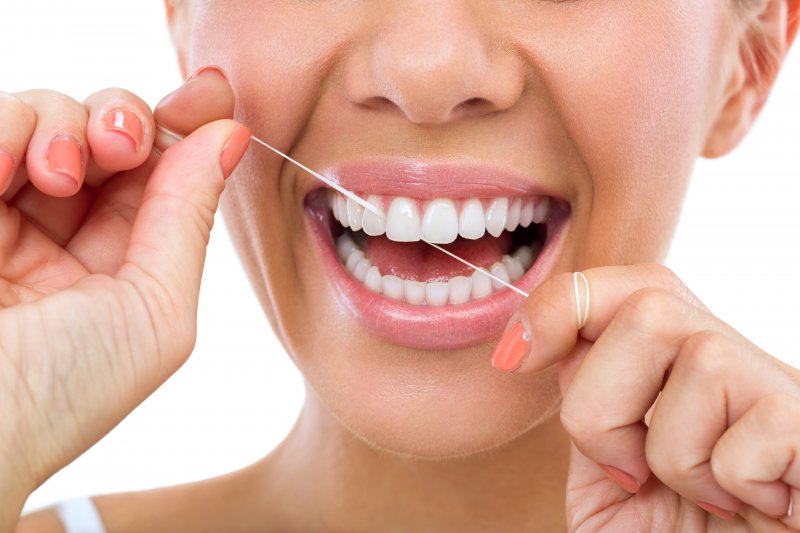
All of us know that brushing our teeth and seeing the dentist for regular appointments are essential for keeping our teeth and gums healthy. But did you know that flossing is just as important? By not flossing, you allow plaque and tartar to build up on the sides of your teeth, greatly increasing your risk of tooth decay and gum disease. That’s why dentists recommend flossing at least once daily.
Why Brushing Alone Just Isn’t Enough
Most of us think of plaque as a sticky, unpleasant substance that builds up on our teeth; and that’s certainly true. But, if you could look at plaque under a microscope, then you would see that it’s filled with millions of microscopic bacteria festering and swarming over your teeth.
These malicious microorganisms scavenge nutrition from the food you eat, especially sugar and simple starches. Not only that, they secrete corrosive acids as part of their digestive process. This weakens the enamel on your teeth, creating cavities and leading to tooth loss.
Brushing is a good way to help control the growth of these unseen enemies. But brushing by itself just isn’t enough. Even the best toothbrush cannot reach the areas between your teeth. That’s why flossing is an essential step. It removes plaque before it has a chance to harden into tartar, which is the next step in the progression of tooth decay and gum disease.
Why Tooth Care Is a Never-Ending Battle
The plaque formation process is continuous. As soon as you remove one layer another begins to form. This goes on throughout your entire life, which is why daily brushing and flossing are both so important. It’s like cleaning your house or changing the oil in your vehicle.
Everything of value that you own requires some degree of maintenance, including your teeth and gums. But the small amount of time and effort you spend taking care of yourself is a real bargain, especially when you think of all the benefits that come from good dental health.
Tips for Effective Flossing
Here are some ways to get the most benefit from this simple, effective practice:
- Hold the floss string so that it forms a C pattern; i.e. so that it wraps around the front and back of the tooth as well as one side. Move the string up and down as well as back and forth. Repeat for each tooth.
- If you find flossing uncomfortable, then you might want to try a thinner or thicker brand of floss or one with wax coatings. Your dentist can recommend a specific type to match your oral profile.
- Some people have trouble grasping floss string between their fingers, either due to muscular or nerve-related conditions. These people may want to try using a plastic floss holder, which makes the task of flossing easier for many people. Other popular solutions include water stream flossers, commonly known as “water picks,” and interdental toothbrushes. Both offer similar benefits to traditional string flossing.
Flossing is one of the easiest and most effective ways to keep your teeth and gums healthy. Use it along with brushing and regular dentist visits to enjoy better dental health. That’s a great way to keep a smile on your face for the rest of your life.
About the Author
Dr. Nicholas Brong holds a DDS degree from the University of California in San Francisco. He has also completed advanced training in laser dentistry and implant placement. You can reach his office online or by calling (507) 288-1066.





